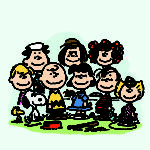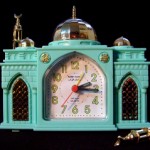Museum Stonemasons
Olivia Holder
OiM Week 2: Capitalism, Labour and Markets
This week I am interested in a postcard from the shop that the Pitt Rivers Museum and the Natural History Museum share. Below the label “The University Museum, Oxford,” is the description: “3. Stonemasons at work, circa 1906.” It features a black and white photograph of two men on scaffolding each wearing a wool cap on their heads and white coats over their shirts and trousers. They are both holding a chisel and hammer up to carved floral reliefs in stone and brick. One man is standing while the other is seated on a rough wooden crate, and both of them are depicted in profile, presumably, hard at work. The standing man’s line of sight and head cocked to one side might convince the viewer that he was caught mid blow, but the seated man’s eyes betray the staged nature of the shot. The gaze of the man on the crate completely misses the site of the work that he purports to be engaged in; in order to be caught in a parallel profile, he stares ahead rather than at his tools. They appear to be acting like stonemasons rather than working like them.
The year cited in the title is 1906. The back of the postcard however reads: “The University Museum, Oxford, built 1855 to 1860. Its conception was inspired by John Ruskin and Sir Henry Acland. Architects: the Dublin partnership of Deane and Woodward.” The year of the photograph and those of the construction do not align.
A fascinating truth to notice or fact to learn is that the building housing these museums is not finished. The façade’s distinctive decorative carving was left unfinished by the Irish stonemason brothers when the university ran out of money and ceased to pay for their labour. With this assignment I was interested in trying to understand this concept of “the appropriated body of alienated labor” through one of the museum pieces. What I see in this photo is a representation of the two men who were employed by the renown, wealthy University of Oxford yet forced to return home underpaid for an abruptly shortened job. Craftsmen working to embellish yet another splendid building of an ancient seat of privilege, they would fall into the group of those “forever on the outside of that material plentitude, their faces peering in through the…window” (Stallybrass ,1998 199).
Yet, in this image the notion of distance also cuts an additional way. Not only was the men’s employment prematurely terminated, but this celebration of their artistry is also removed from the actual period of their labour. This image was taken some 46 years after their dismissal. With that elapse in time, it is reasonable to wonder who the rather youthful men depicted in the photo are. They could either be actors representing the sibling team, or they could possibly be later workers adding to the original work who were forced to pose for a picture. In either case, the card inappropriately implies that the image shows the brothers at work. Importantly, it does further exploit the labour of the artists. It is a postcard at the museum shop produced to be sold to visitors who admired the handiwork of the men. It exemplifies a commodification of their labour. It is not clear when this postcard was first assembled and produced for sale, but it is fair to assume that this is a process of commodification that certainly would not have benefited the brothers monetarily.
This example differs from the Stallynrass article in many ways, one of them being that we are not looking at an item that is constantly transitioning into a commodity—at one point acting as a vessel of memory and at others expressing its exchange value. It is, of course, not an item of clothing, but it is interesting to consider, that if the men depicted, are indeed actors, that they were donning what they understood to be the “fustian” of stonemasons. These costumes would have been briefly worn to produce a product intended to make money. The clothing would then probably have ended up in a second hand shop somewhere in the city.
Contributed by OliviaHolder on 25/01/2022






